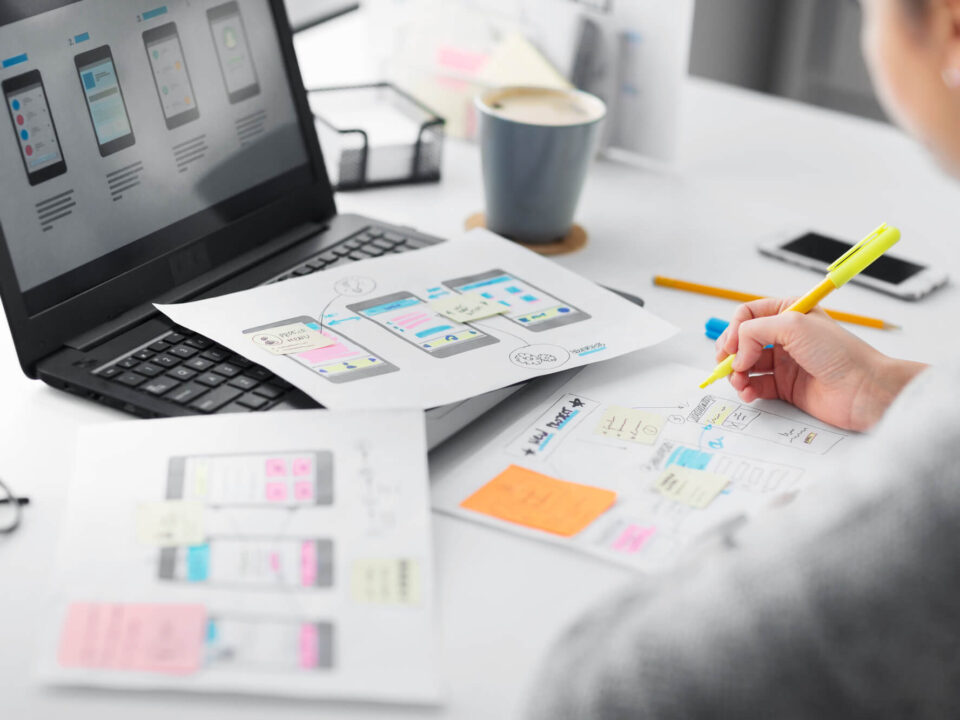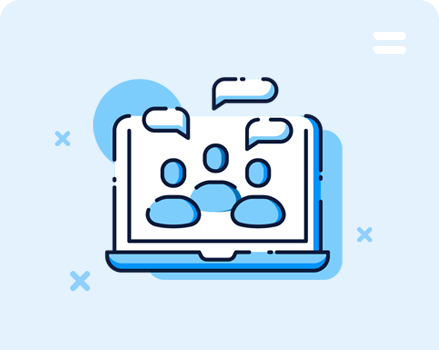HOW TO CONDUCT USER-TESTING

UX TESTING AN APP – ON A BUDGET
March 24, 2021Conducting user testing before the launch of a website, app or software program is integral to having a successful product. Test driving the software to discover any glitches is extremely important, and that’s why User-testing is crucial.
The first step in usability testing is to build a prototype, so prototype development is the first part of the process. The first stage of the design process is the prototype development. Before embarking upon the digital prototype phase, it’s important first to conduct paper prototypes, to get an idea of the framework. The other option is to use demo software to run the prototype. Testing the initial framework saves a lot of time on the design process later, and gives a comprehensive overview of the usability of the prototype. Having a good prototype is essential to having functional UX.
UX prototypes need to have four primary components:
1. Precision- This represents the finer aspects of the prototype
2. Interactivity- this represents the functionality of the user
3. Evolution- This represents the length and stages of the prototype development
4. Representation- This evaluates the form of the prototype
Testing the prototype early on and frequently is essential to have the best outcome possible for the user-testing. Every aspect of the design should be included in the prototype to ensure thorough testing as possible. A prototype is much more than a traditional beta test- it’s an in-depth look at the different variables of the design.
There are three main types of user-testing prototypes:
1. Paper Prototyping
Paper drawn prototypes mimic digital interaction. There are many advantages, such as the fact that paper prototypes are fast and inexpensive. Paper prototypes can take between 10-15 minutes to create and are fantastic for brainstorming. This also adds to team-building, allowing colleagues to work together. The disadvantages are that paper prototypes often produce false positives, and can be an unrealistic representation of digital operating systems. Also, it’s difficult to do user-testing with paper prototypes as there is virtually no user experience with the prototype.
2. Digital Prototyping
Digital prototyping is the best way of testing user interfaces and is probably the easiest and most reliable form of prototyping. There are many different types of apps and software programs which allow for optimum digital prototyping and comes with many advantages. One of the main advantages is that Digital demo software provides realistic interactions with the product. Another advantage is greater flexibility so that the prototype can be progressively enhanced. Digital prototypes are fast, and perfect for tracking real-time user interactions.
3. HTML prototyping
HTML prototyping provides the technical foundation for a product and means that the coding can be finalized from the beginning of the project, which can save time in the long run. HTML prototypes can be tested on almost any digital platform and is low cost. However, HTML prototypes are dependent on the developer skill level and can be very constraining when it comes to UX design.
A key aspect of the prototype development phase is creating a test plan/script, which should be developed at the same time, simultaneously. The test plans outline the measurable outcomes required and evaluate how the results will be measured. Doing exploratory research will help the team to develop the test script. The test plan is fantastic for identifying key areas for the user testing, as it measures the success of the respective tasks during the user- experience. Various aspects such as whether the functionality should be explored, or whether there are common hindrances are some of the definable questions and outcomes of the test plan/script. As digital products are continually evolving, the digital product has to be tested in different stages, which ensures higher rates of conversion optimization for the final product.
The next stage in user-testing is identifying the right test-participants, which can also be related to the persona’s, in which you create a semi-fictional representation of the expected consumer demographic. Recruiting the right participants for the usability testing is probably one of the most important processes, as it’s essential to ensure that the user interaction with the digital prototype will ensure the best results. If the user does not understand the digital product, then there will be less exploration of the product, leading to less than optimum results. Therefore, to have in-depth data, the participants need to have an active interest in the digital product to ensure that the usability testing.
Finding the right format to conduct the UX usability testing is the next step. Some companies may opt to have a moderator, whereas others prefer remote studies. Having the participants do the usability test from one location is ideal, as this can also help and mean there is assistance for technical malfunctions. After the participants take part in the testing, documenting the results is essential.
There are various recommended methods to gather the data from the usability tests:
• Audio recordings
• Participant surveys
• Success rate calculations
• Error tracking
The final report should include the following factors:
• Demographics
• Test Results
• Data charts
• Findings
• Summary
By conducting the usability testing, the company will have the insight needed to improve and refine the digital product.





